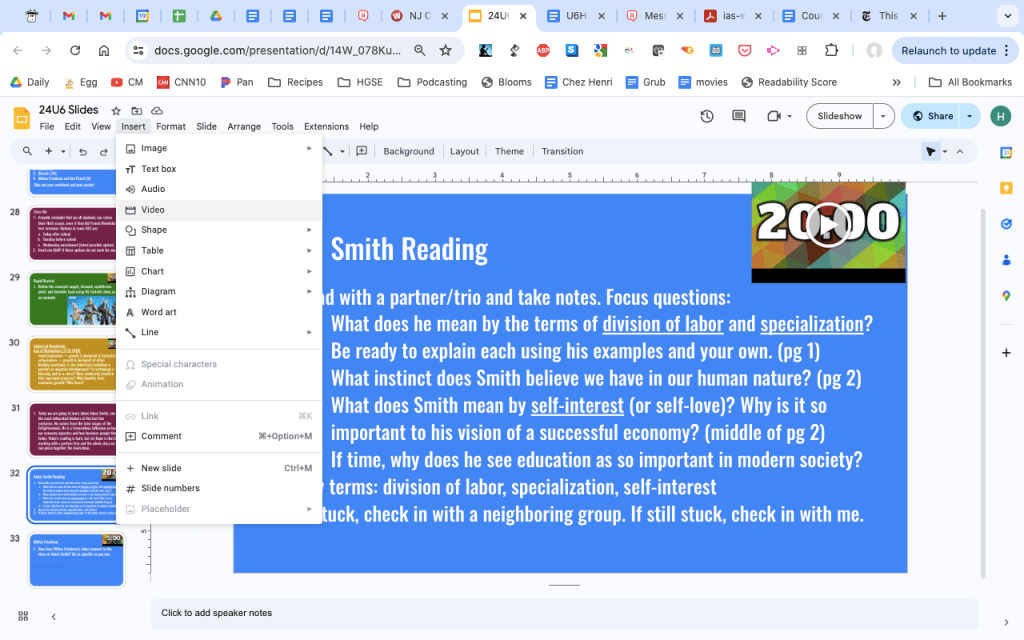Why I Learned to Embrace Classroom Timers
Using a timer helps teachers ensure that they are making the most of their limited time with students.
Your content has been saved!
Go to My Saved Content.As a new teacher, I kept my distance from classroom timers. I didn’t think they fit my image as a young high school humanities teacher smitten with the messiness of philosophy and literature. I imagined timers as more fitting for a math or science teacher, one with a pencil behind the ear and a fresh stack of graph paper. Even more, I worried that a classroom timer would turn me into an inflexible drill sergeant—the kind with the stopwatch and the ear-piercing whistle ready to perforate eardrums at any moment.
But over my two decades as a teacher, I have learned to embrace the timer and use it in ways that feel humanistic rather than robotic. I’ve come to see it as one of the most important tools for any teacher, regardless of subject or grade level, and one critical to ensuring that diverse learners can thrive in our classrooms.
4 Reasons Why Every Teacher Needs a Timer
1. Timers help us better manage our time with students. The time we spend with students is our most precious resource. I have crunched my own numbers and realized that I only have 84 hours with my 10th-grade World History students per year. That’s about 21 hours per quarter, or 10 hours in the average month. This is teaching time that I can easily squander if I’m not careful, especially when I subtract other demands such as assessments and review lessons.
2. Timers improve our lesson planning. They give us a better sense of how long lesson components actually take—e.g., are my “mini-lectures” actually miniature in terms of the time they leave for student project time?
3. Timers allow us to make better, less anxious decisions in the moment. For example, do I actually have the time to address this fascinating but semi-tangential question from a favorite student?
4. Timers are ultimately about equity. They help us to better serve our most vulnerable students. When we fall behind in our lessons, we frequently end up rushing later on, which only widens the learning gaps between our strongest and weakest students. Often the most critical lesson components for supporting all students happen in the second half of the lesson—things like independent practice, checks for understanding, reteaching, and consolidation. Timers help us make sure we can get to these key moments in the lesson rather than falling behind during less important warm-up activities.
Using Timers—Without Turning Into a Drill Sergeant
Be transparent. Make sure students can see the timer. I typically insert a quick YouTube timer video in the corner of my daily projected Google Slide deck.

You can search for two-minute timers, 10-minute timers, etc., and then adjust the scroll bar in the video if you want something more specific, like 45 seconds for a partner turn-and-talk. (To insert the video, go to Insert menu→ then choose Video → then search YouTube.) Teachers who use a document camera can instead put a small kitchen timer or even a cell phone timer in the corner of the display area for all students to see.
Keeping the timer visible at all times allows students to look and see how much time they have left for an activity rather than relying on verbal time stamps from the teacher. And it builds a gentle culture of urgency. It sends students the message that our time together is important and finite.
Include student voice. Even though the timer is omnipresent in my class, I never want it to feel like some imposing clock tower. At times, I will ask students how many minutes they need to review homework or peer edit with a partner and then set the timer accordingly. Other times, during the last few minutes of a longer block of work time—for example, a 15-minute independent reading block—I will say, “Time check,” at which point students show me with their fingers how many more minutes they need.
My students know that the timer is not a straitjacket, that I will adjust as needed with their input in mind. And during those moments when I do extend the timer—by three minutes, for example—it helps me remember that I will have to make up for these three minutes later in the lesson.
Time teacher-centered as well as student-centered activities. The most obvious moments for timing are when students are taking the lead—e.g., turn-and-talks or group lab work. That said, it’s useful to time teacher-centered moments as well—e.g., five minutes for teacher-led homework review. That way, it’s easy to look at the timer and quickly decide whether you have time to examine that one extra practice problem together. It even can keep us in check as teachers if, like me, you sometimes get a bit carried away by impromptu teachable moments, current events connections, and Boston sports triumphs.
Although they are hardly the most dazzling piece of edtech, timers are an indispensable tool in the teacher tool kit, useful for both teachers and students. While they seem restrictive at first, when effectively used, timers ultimately liberate your teaching—unlocking higher levels of student growth and empowering you to make more confident teaching decisions every minute of the day.
